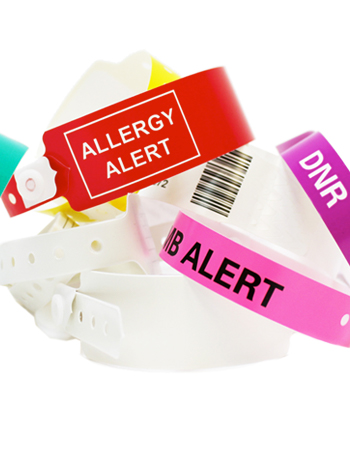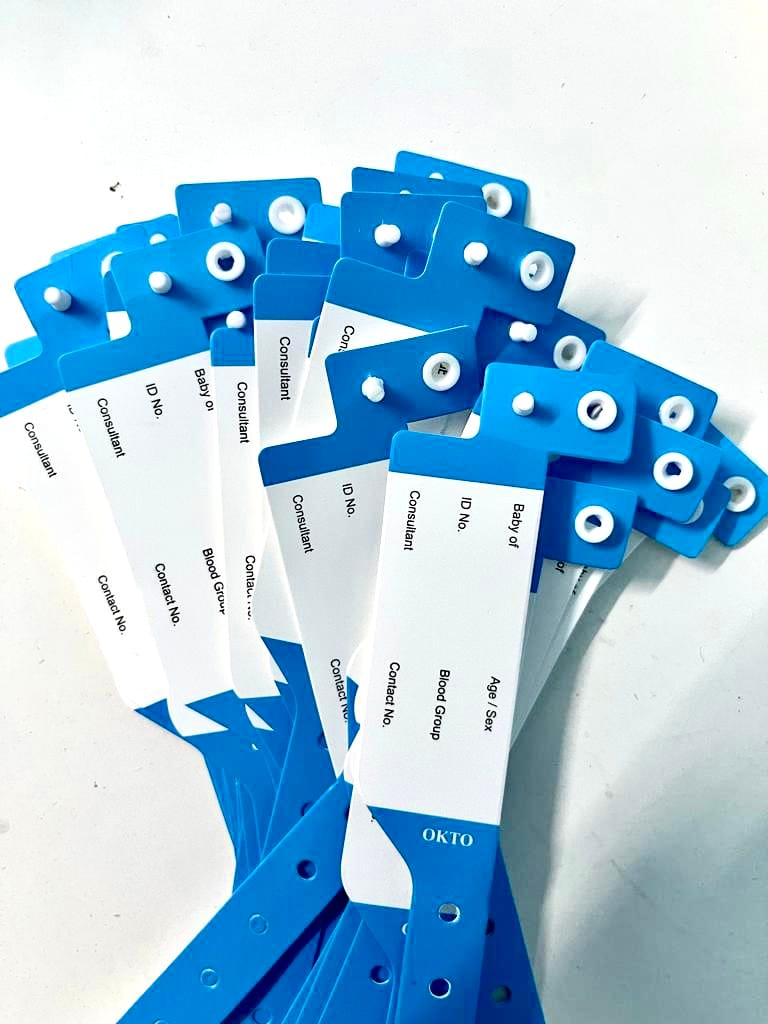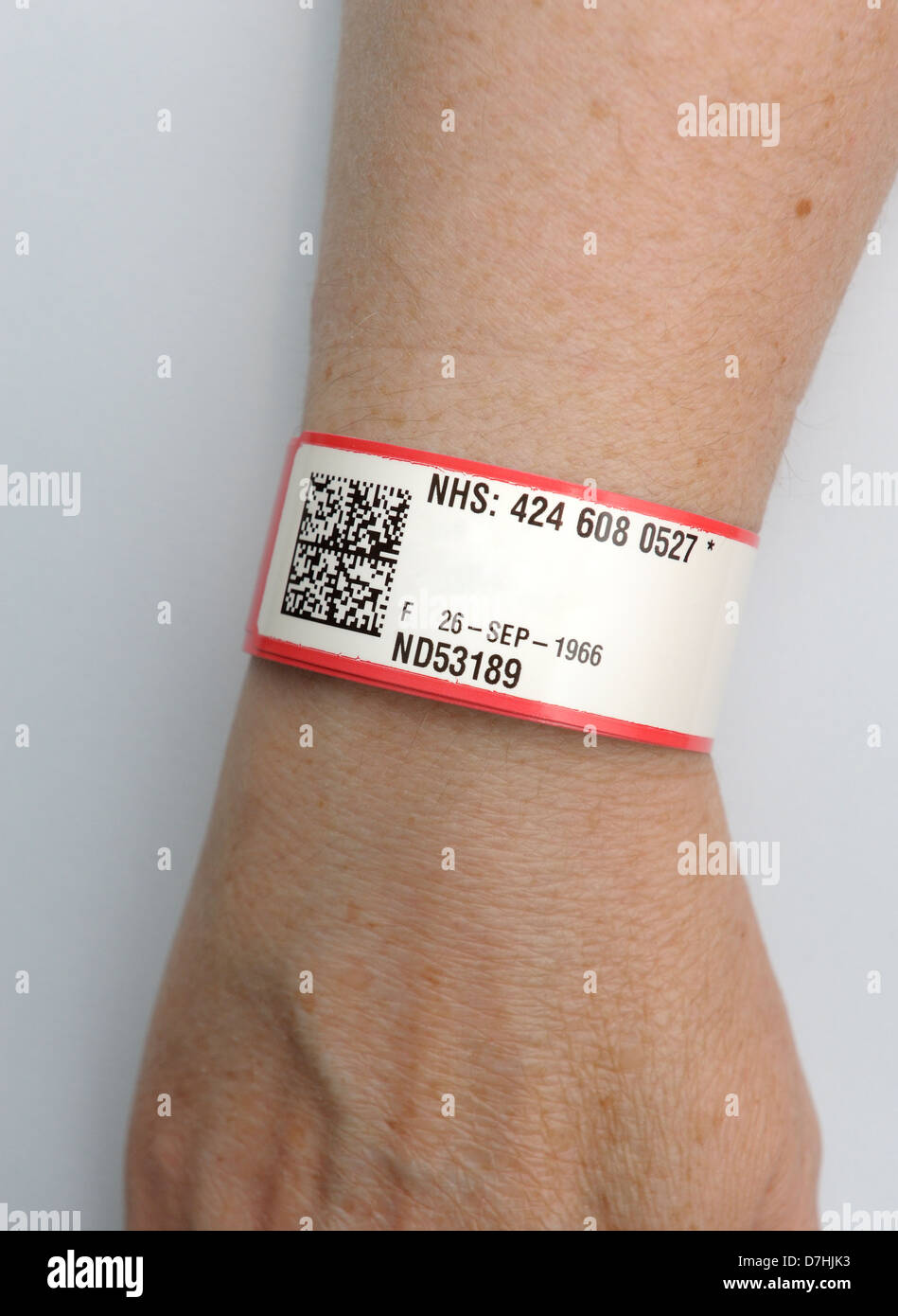Why Patient Identification Band is Important for Safe and Accurate Health Care
Why Patient Identification Band is Important for Safe and Accurate Health Care
Blog Article
Enhancing Security: The Importance of Individual Recognition Bands in Health Care
In the world of medical care, the efficiency of person recognition bands can not be overstated, as they serve as a fundamental safeguard against misidentification and succeeding mistakes. As we discover the diverse duty of these bands, it comes to be noticeable that their relevance expands past simple identification, raising concerns regarding best practices and future technologies in person safety and security.
Introduction of Client Recognition Bands
Individual recognition bands play a critical duty in making sure the security and accuracy of person care in medical care setups. These bands, usually endured the wrist or ankle joint, function as a vital tool for verifying patient identification, thus minimizing the threat of mistakes in therapy, medication management, and various other healthcare treatments. Made from resilient materials, individual identification bands usually consist of vital information such as the individual's name, date of birth, clinical record number, and barcodes or QR codes for scanning.
The execution of client recognition bands is crucial in various medical care environments, consisting of healthcare facilities, outpatient facilities, and long-lasting care establishments. They contribute to an organized approach in individual management, allowing medical care professionals to quickly and properly determine people, especially in high-pressure scenarios where swift decision-making is necessary.
In addition, the use of these bands is aligned with regulative criteria focused on enhancing client security - Patient Identification Band. By making sure that each person's details is quickly verifiable and easily easily accessible, medical care providers can maintain a high requirement of care, decrease the incidence of unfavorable events, and foster a society of safety and security within health care organizations
Benefits of Accurate Identification
Accurate recognition is basic to boosting individual security and care quality in healthcare settings. It offers as the initial line of defense against mistakes that might bring about damaging person results. By making sure that each client is correctly recognized with reputable ways, such as individual identification bands, doctor can dramatically reduce the risk of misidentification, which can bring about improper treatments, medication mistakes, and even medical mix-ups.
Additionally, accurate person identification facilitates efficient communication amongst healthcare groups. When all team member can regularly identify individuals, they can share vital information a lot more effectively, leading to much better coordination of treatment. This is particularly essential in emergency situation circumstances where prompt interventions are vital.
Additionally, precise recognition supports compliance with governing standards, consequently reducing the danger of lawful repercussions for health care centers. It promotes trust fund between individuals and medical care service providers, as people really feel much more safe understanding that their identifications are being safeguarded.

Common Obstacles Dealt With
Ensuring reliable client identification in health care settings offers a variety of obstacles that can jeopardize safety and security and care top quality. One considerable challenge is the irregularity in patient populaces. Patients might arrive in a state of complication or distress, making accurate identification tough. Furthermore, language obstacles can impede reliable communication, making complex the verification procedure.
One more obstacle is the reliance on human elements in recognition treatments. Healthcare specialists might unintentionally overlook or misinterpret recognition protocols, particularly in high-stress atmospheres such as emergency situation divisions. This can lead to errors, consisting of the management of wrong therapies or medications.
Technological problems likewise posture obstacles. Although electronic health record (EHR) systems are developed to enhance person recognition, system outages or helpful resources user errors can interrupt the process. The physical layout of person ID bands can lead to readability concerns, specifically in instances where bands are harmed or covered.
Finally, inconsistent training among staff regarding recognition methods can lead to spaces in expertise and technique. Attending to these difficulties is important for improving patient safety and security and making certain that recognition bands serve their desired objective successfully.
Finest Practices for Implementation
To effectively apply client identification bands in medical care settings, companies need to embrace a multifaceted strategy that prioritizes training, technology, and standardization assimilation. Standardization includes establishing clear protocols for the design, application, and use identification bands across all divisions. This makes sure consistency and decreases the risk of errors connected to differences in band kinds or labeling approaches.


Training is crucial for all health care team to ensure they comprehend the relevance of exact client identification, exactly how to properly apply and check out identification bands, and the treatments to adhere to in situation of inconsistencies. Routine workshops and correspondence course can reinforce this knowledge and promote a society of safety and security.
Modern technology combination plays a pivotal function in improving the performance of client recognition bands. Making use of barcode scanning or RFID innovation can simplify the identification procedure, permitting real-time verification of client identifications. In addition, electronic health record systems ought to be configured to consist of alerts for mismatches between the recognition band and patient information.
Future Trends in Client Safety
As health care continues to progress, the focus on patient safety is likely to heighten, driven by innovations in modern technology and a greater understanding of systemic risks. Arising patterns show a change in the direction of more integrated systems that take advantage of data analytics, fabricated intelligence, and machine learning to click here to find out more enhance person recognition procedures. These technologies can assist determine potential safety concerns prior to they escalate, consequently minimizing mistakes associated with misidentification.
In addition, the look at this web-site execution of blockchain technology might change exactly how patient information is securely shared among health care providers, guaranteeing that identification bands are constantly accurate and up-to-date. This will not only enhance patient safety yet additionally promote smooth interaction across multidisciplinary groups.

On top of that, the growing concentrate on personalized medication is anticipated to influence patient safety and security protocols. By including demographic and genetic information right into recognition systems, health care experts can customize therapies better, reducing the threats of unfavorable responses as a result of misidentification.
Conclusion
In final thought, client identification bands offer as a crucial component in boosting security within health care environments. Eventually, the ongoing focus on durable identification methods will add to improved individual outcomes and overall safety in healthcare settings.
In the realm of medical care, the efficiency of person identification bands can not be overstated, as they serve as a basic secure versus misidentification and succeeding mistakes.Patient identification bands play an essential duty in making certain the safety and security and precision of person care in medical care setups. Made from sturdy materials, patient identification bands usually include necessary info such as the client's name, day of birth, clinical document number, and barcodes or QR codes for scanning.
By making certain that each client is correctly recognized through trusted means, such as client identification bands, medical care carriers can substantially reduce the threat of misidentification, which can lead to unacceptable treatments, drug mistakes, and even surgical mix-ups.
In verdict, client identification bands serve as a vital part in enhancing safety within medical care settings. Patient Identification Band.
Report this page